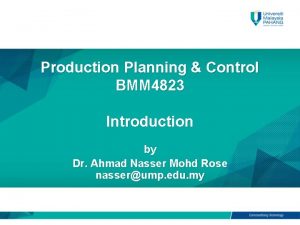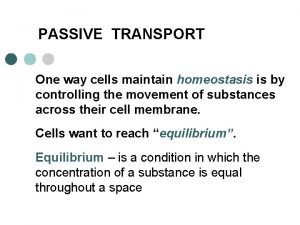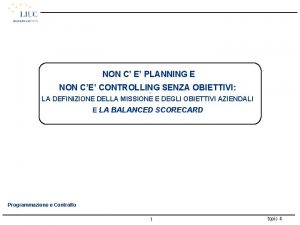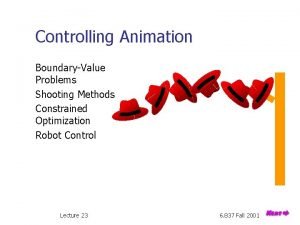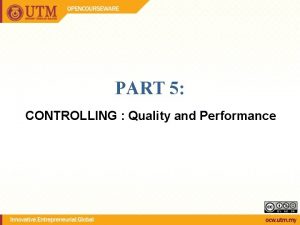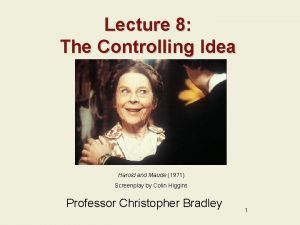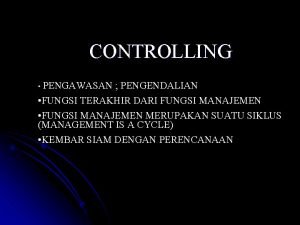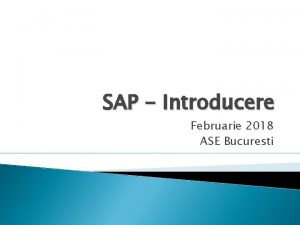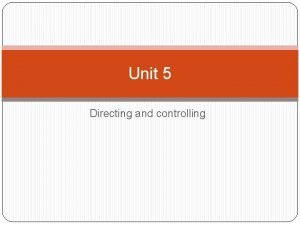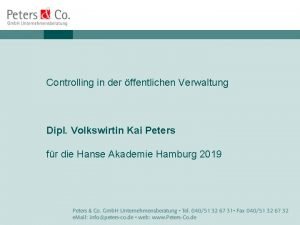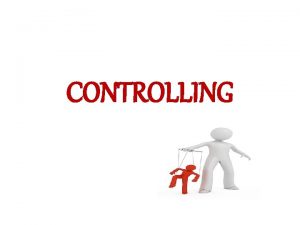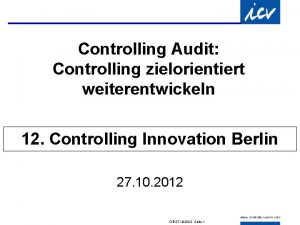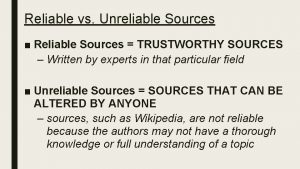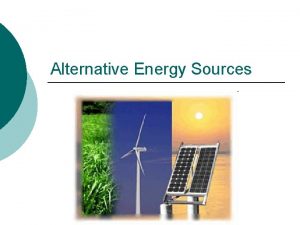CONTROLLING HAPPINESS Sources of Happiness How Do These






















- Slides: 22

CONTROLLING HAPPINESS

Sources of Happiness

How Do These Effect Happiness? Ø Ø Ø Age Very Little Health Moderately Gender Very Little Genetics Very Much Intelligence Very Little Ø Ø Ø Love and Marriage Very Much Children Moderately Attractiveness Very Little Work Very Much Religion Moderately

The Pursuit of Happiness Myers 7 Enablers of Happiness 1. 2. 3. 4. 5. 6. 7. Supportive friendships that enable companionship & confiding A socially intimate, sexually warm, equitable marriage A faith that entails communal support, purpose acceptance, outward focus, and hope Challenging work and active leisure, punctuated by adequate rest and retreat Positive self-esteem, feelings of control, optimism, outgoingness Realistic goals and expectations A fit and healthy body

Dan Gilbert: Exploring the frontiers of happiness Video: Dan Gilbert Website: http: //www. ted. com/index. php/talks/dan_gilbert _researches_happiness. html

Dan Gilbert: Exploring the frontiers of happiness Key Terms � Prefrontal cortex � Impact bias � Psychological immune system � Synthetic vs. Natural happiness

Positive Psychology & Happiness Discussion by Martin Seligman � Authentic Happiness

Seligman: Sources of Happiness Pleasant Life � Mindfulness � Savoring � Effects Good Life � Flow of genetics* in Work*, Play, and Love* Meaningful Life � Purpose � Service *Play a very important role in happiness

The Scope of Positive Psychology, continued Introducing positive psychology’s three lines of inquiry Positive psychology pursues three main “legs” on which the field stands: 1. Positive subjective experiences (good moods, happiness, and love). 2. Positive individual traits (character strengths and virtues). 3. Positive institutions (families, schools, & supportive work environments).

Positive Individual Traits Resilience: reacting well to life’s challenges • Resilience – is “a person’s ability to recover and often prosper following some consequential life event”. Some people even display posttraumatic growth, or “enhanced personal strength” following trauma. • While resilience helps people rebound to pre-trauma levels, posttraumatic growth actually causes enhanced functioning, post-trauma.

Additional Information on Flow Mihaly Csikszentmihalyi: Creativity, fulfillment and flow http: //www. ted. com/index. php/talks/mihaly_csi kszentmihalyi_on_flow. html "Flow" & Mihaly Csikszentmihalyi http: //austega. com/education/articles/flow. htm

Positive Subjective Experiences, continued Flow • • Flow – “the state of being wherein a person becomes fully involved and engage in the present time by some interesting, challenging, and intrinsically rewarding activity”. When in this state, people become Less self-aware and lose all track of time. Focus all their energies and attention on an activity where skill and challenge are in balance.

Positive Subjective Experiences, continued Flow, continued • Finding flow According to Csikszentmihalyi, we find flow when engaged in activities that have the ideal balance of challenge and skill level (see Figure 16. 8). Once these criteria are met, the activity becomes intrinsically rewarding, produces positive emotions, and promotes goal attainment and achievement.

Figure 16. 8. The revised model of flow state. According to the revised model, flow is experienced when a person’s perceived challenges and skills are above the person’s average levels; when they fall below, the individual experiences apathy. The intensity of the experience increases as the distance from the person’s average levels of challenge and skills grows greater (illustrated here by the concentric rings). Adapted from Csikszentmihalyi, M. (1997). Finding flow. New York: Basic Books.

Meditation & Mindfulness Continuing Research is revealing the efficacy of meditation, mindfulness, and activities that encourage them. 2 Areas of focus in the research: � Inactive meditation and mindfulness � Mindful physical exercise

Inactive meditation and mindfulness Typical to these approaches is… 1. Instruction in diaphragmatic breathing to help trigger the parasympathetic nervous system response.

Inactive meditation and mindfulness (Continued) 2. Instruction in body awareness Acknowledgment of sensations Progressive muscle relaxation

Inactive meditation and mindfulness (Continued) 3. Typical approach: Instruction in awareness/mindfulness. The primary goal of meditation is not relaxation but awareness. ” Minding the body, Mending the Mind, Borysenko, J Effective for anxiety and depression

Positive Subjective Experiences, continued Mindfulness • • Mindfulness – refers “to a cultivated perspective wherein people are sensitive to context and focused on the present”. When mindful, we Resist the impulse to control uncertainty. Are less prone to evaluate ourselves. Are in a more flexible state of mind.

Figure 16. 9. Some qualities associated with mindfulness meditation. People who learn mindfulness meditation can expect to derive some benefits from the activity. As you can see, the qualities listed here that are associated with mindfulness meditation fit well with established themes in positive psychology. Adapted from Shapiro, S. J. , Schwartz, G. E. R. , & Santerre, C. (2002). Meditation and positive psychology. In C. R. Snyder & S. J. Lopez (Eds. ), The handbook of positive psychology (pp. 632 -645). New York: Oxford University Press. Table 46. 1, p. 640.

Dr. Victor Frankl • 3 year Concentration Camp Survivor • Wrote Logo. Therapy • “When we are no longer able to change a situation; we are challenged to change ourselves. ” Frankle “I broke my neck but it did not break me. ” Frankle "He who has a why for life can put with any how. "Neitzsche

Dr. Victor Frankl "Again and again I therefore admonish my students in Europe and America: Don't aim at success - the more you aim at it and make it a target, the more you are going to miss it. For success, like happiness, cannot be pursued; it must ensue, and it only does so as the unintended side effect of one's personal dedication to a cause greater than oneself or as the by-product of one's surrender to a person other than oneself. Happiness must happen, and the same holds for success: you have to let it happen by not caring about it. I want you to listen to what your conscience commands you to do and go on to carry it out to the best of your knowledge. Then you will live to see that in the long-run - in the long-run, I say! - success will follow you precisely because you had forgotten to think about it. "
 Print sources of information
Print sources of information Important of water management
Important of water management Dilbert controlling
Dilbert controlling Planning controlling
Planning controlling Apa itu controlling idea
Apa itu controlling idea Prosmosis
Prosmosis Planning e control
Planning e control Methods of controlling animation
Methods of controlling animation The controlling idea or the central insight of the story
The controlling idea or the central insight of the story What is the theme of controlling
What is the theme of controlling Performance controlling
Performance controlling Controlling food cost
Controlling food cost Kfc controlling
Kfc controlling Whats the controlling idea
Whats the controlling idea Fungsi manajemen controlling
Fungsi manajemen controlling The devices for controlling harmonic distortions are
The devices for controlling harmonic distortions are Tranzactii uzuale in sap
Tranzactii uzuale in sap Directing and controlling
Directing and controlling Controllingkreislauf
Controllingkreislauf Controlling management function
Controlling management function Example of paragraph with topic sentence
Example of paragraph with topic sentence House of controlling
House of controlling What is body
What is body



